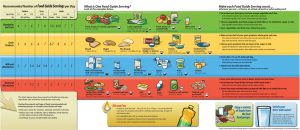Got milk? It may not be as good for you as you think. Why is it such a common drink, and what’s in it?




Indicated by the famous “milk mustache”, milk has been advertised by many famous athletes as the perfect beverage. Recognized as part of a balanced and nutritious diet, it is believed to strengthen bones and decrease the likelihood of developing osteoporosis in aging women. Contrary to what most people think with regards to milk being good for their bones, high milk consumption is not necessarily associated with lower rates of fracture incidence in adults. In fact, it way have the opposite effect of potentially weakening bones with time and excess consumption. A 20 year cohort study in three counties in central Sweden discovered that high milk consumption is associated with increased fracture rates in women aged 39-74. Of the 32793 female participants, 17252(52.6%) of women were found to have experienced a fracture, in which 4259(13%) of those fractures were of the hip. There was no negative association between the amount of milk women drink per day and fracture incidences. Instead, there was a positive correlation between milk consumption and fracture rates.
The Canada Food Guide indicates that men and women should consume up to 2-4 servings of milk a day. Why?

Dr. Walter Willet, Professor of Epidemiology and Nutrition at Harvard T.H. Chan School of Public Health and Professor of Medicine at Harvard Medical School, states that the “Dairy industry has become a very powerful economic force”. During WW1, the American government shipped large amounts of canned and powdered milk overseas to combat soldier malnutrition. This large demand for milk caused farmers to focus primarily on the production of milk, and to focus less on their other crops (chickens, wheat, etc.). When WW1 ended, and the demand for milk decreased, milk supply in america was at an all-time high. So, what did America do in response to this? Well, they promoted drinking milk as part of a nutritious diet. Unfortunate to most, they developed a liking for milk, which is why the milk industry has become so powerful today.
Below, an informative video on government relationships with dairy industries:

So now, one may ask: What’s in milk? Milk is composed of mostly water, fat, protein, carbohydrates and trace vitamins/minerals. Within those categories, casein protein, Insulin-like growth factor-1(IGF-1), and lactose are examples of milk components that have been linked to adverse impacts on health: increased rates of colon cancer, acne and bloating/gas, respectively (See attached link in bottom for these studies).
Considering that 65% of the human population is unable to digest milk, I am skeptical on the Canadian Food Guide’s warranting it an entire dietary category. With regards to personal nutrition planning, I suggest folks do more research on milk and its components in order to make the best decision on its prominence in their diet.
For more information, please watch the following video:

Links to studies:
https://www.ncbi.nlm.nih.gov/pmc/articles/PMC2715202/ – IGF-1, acne, cancer
https://www.ncbi.nlm.nih.gov/pmc/articles/PMC4166373/ – Casein – cancer
https://ghr.nlm.nih.gov/condition/lactose-intolerance – lactose – bloating and gas
-Sina Alavi
